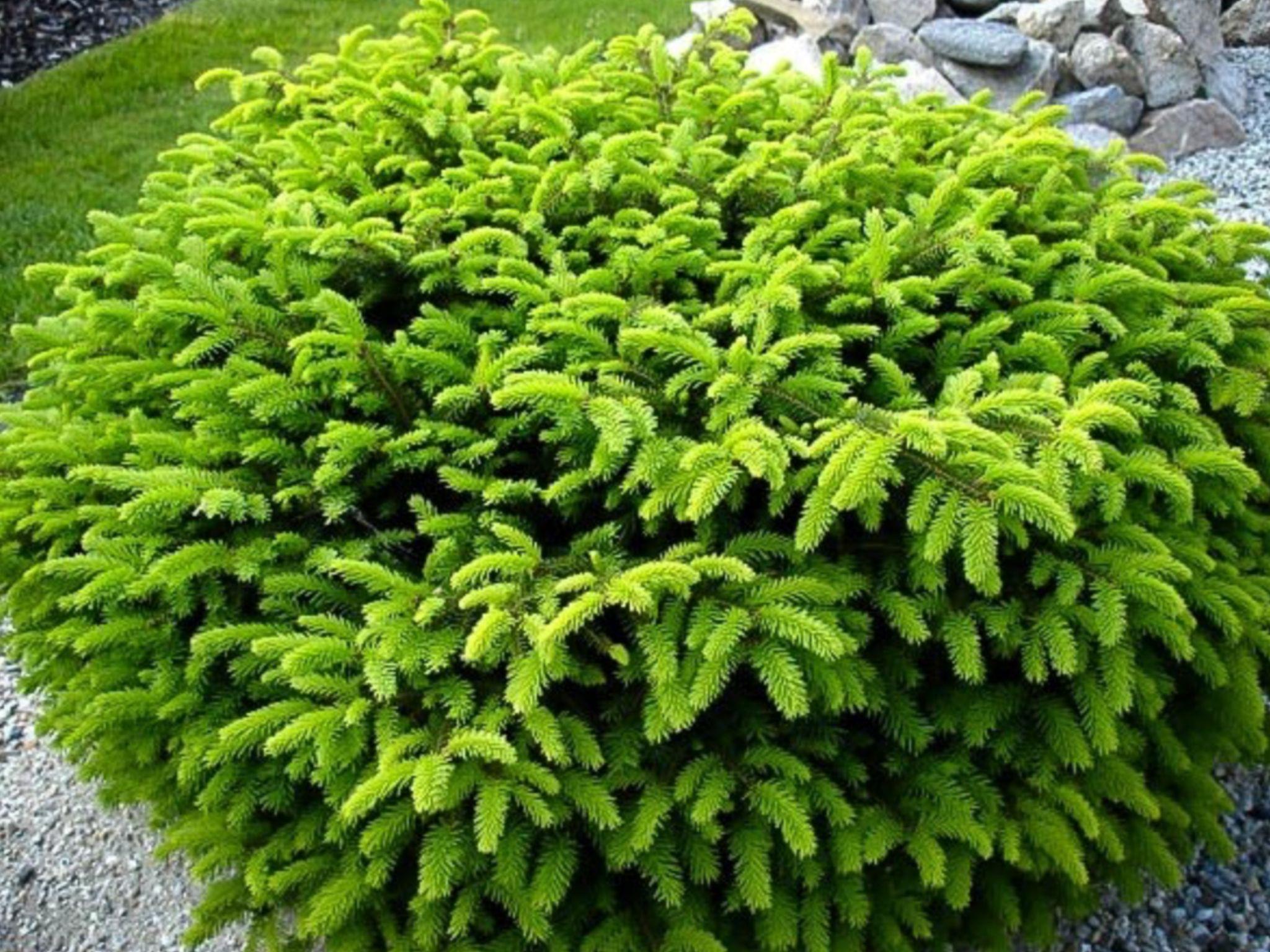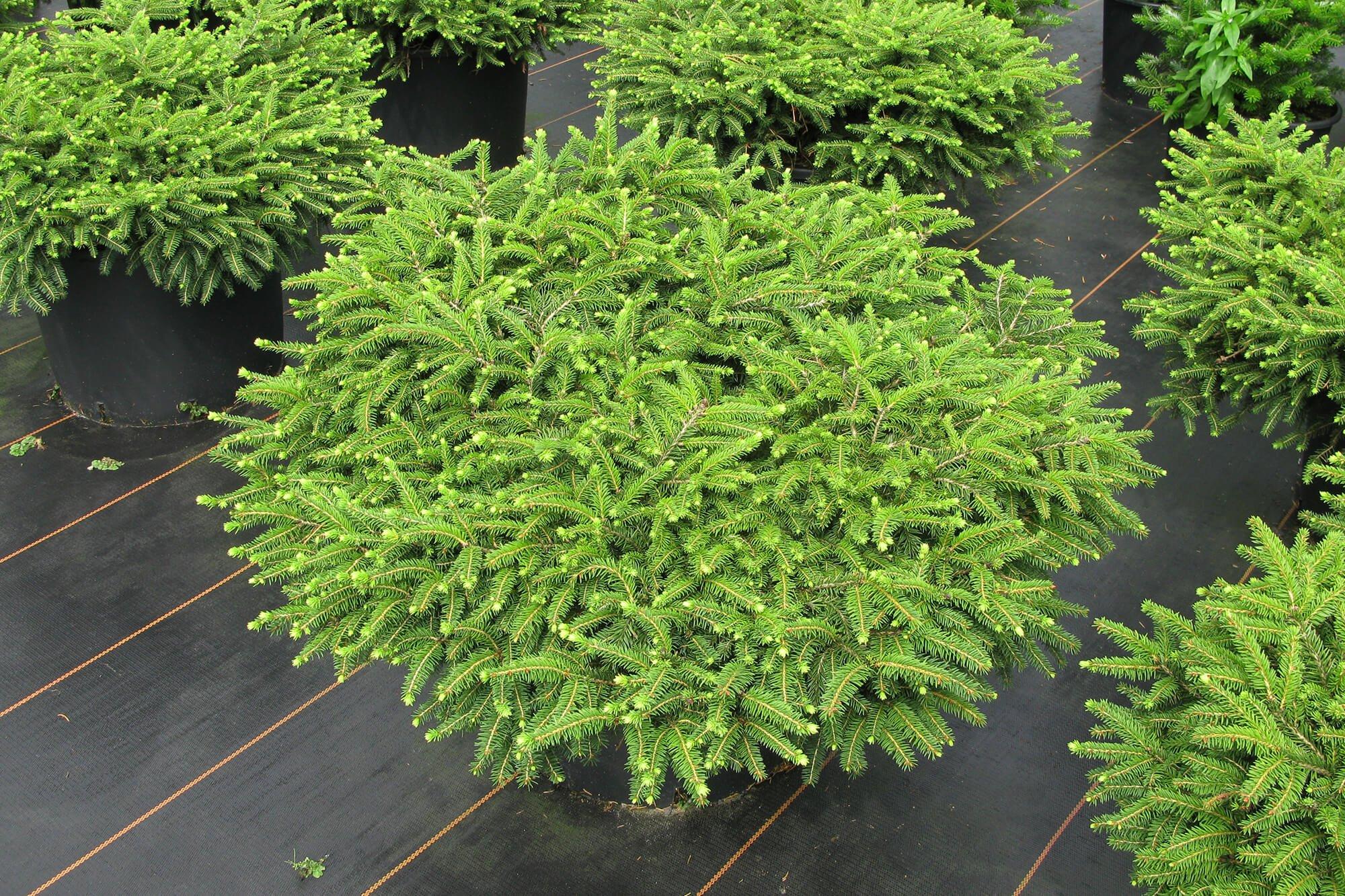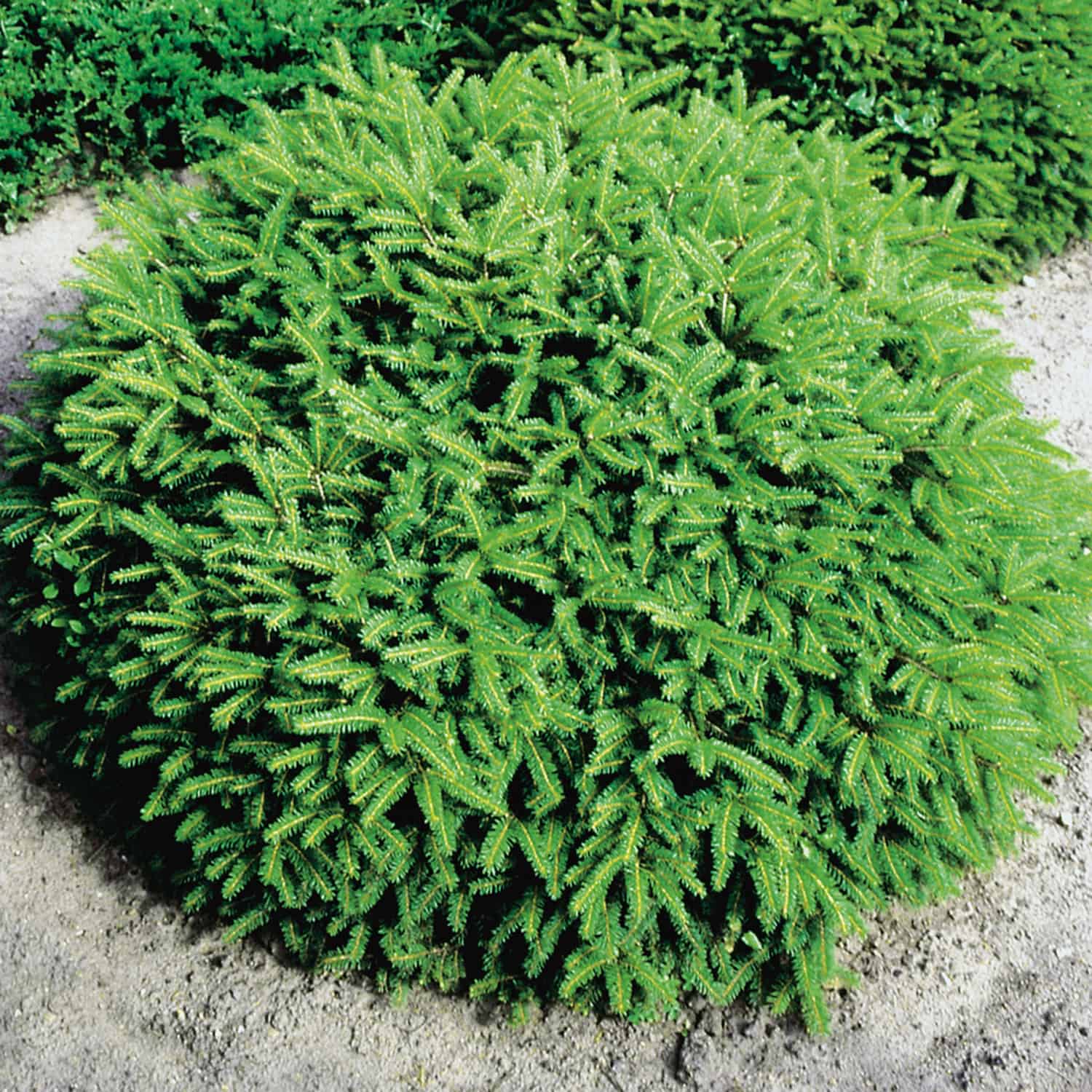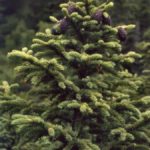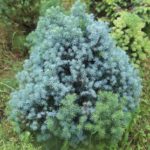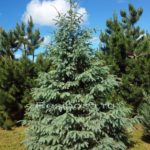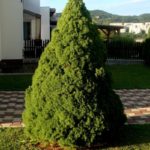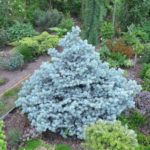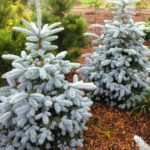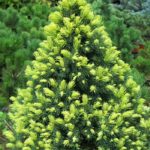Spruce Nidiformis is an attractive coniferous plant that was developed in a German town located near Hamburg. This culture was described at the beginning of the last century. The tree is compact in size, which is why this variety is considered dwarf. The crown of this plant is characterized by an unusual shape, which is why it is often compared to a bird’s nest. Spruce of this variety is considered undemanding to care and is resistant to frost.
Description
Norway spruce Nidiformis has a height of just over 1 meter. Moreover, its width reaches 2 meters. The culture is characterized by slow growth. Over the course of a year, it grows in height by 2-3 centimeters.The width of the plant increases by 5-7 centimeters.
A characteristic feature of the culture is its thick crown, which consists of evenly growing branches. They are covered with short and soft needles. As it develops, the spruce acquires a round shape with a dense, flattened crown. With the arrival of spring, new shoots appear from the buds, which are covered with light green needles. Subsequently it darkens.
https://www.youtube.com/watch?v=a_jmtZ40PNk
In adult plants, by the age of 5 years, cones of 12-15 centimeters in size appear. At first they have a green tint, and after ripening they acquire a brown color.
How to plant correctly
Planting Nidiformis in open soil has certain features. Experts recommend buying seedlings with closed roots. They must be carefully inspected before purchasing. The needles should not show signs of pathology. It is important that the cushion crown is not injured. In addition, there should be no signs of rotting on the soil surface.
The seedling should be planted with a lump of soil, since already formed mycorrhiza is present there. In addition, following this rule helps to avoid damage to the roots. At the bottom of the prepared recess for planting, it is necessary to provide a full drainage layer of crushed stone or sand. Its thickness should be approximately 20 centimeters.
To plant a plant in open soil, you need to do the following:
- Water the plant in advance.This will help avoid damage to the root system or the seedling itself.
- Remove the spruce from the container and place it in a previously prepared hole. The plant must be placed vertically.
- Fill the voids with the substrate, mixing it with fertilizer. Lightly compact the tree trunk circle and water the plantings generously.
- Make sure that the root collar is level with the ground surface. It should not be buried, as this may cause rotting on the trunk.
- After watering, lightly compact the tree trunk circle again and loosen the soil a little. Sprinkle the surface of the substrate with a layer of mulch.
Rules of care
Spruce Nidiformis is an undemanding crop that can easily withstand frost and does not require special care. That is why it is often used in landscape design. However, in order for the culture to maintain its decorative properties, it needs to be properly cared for. In this case, the following rules must be observed:
- Plant the crop in a sunny area. The plant is a dwarf variety that has a low-lying crown. Therefore, the culture often encounters fungi. Planting in a well-lit place helps avoid this.
- Remove weeds regularly. Unwanted vegetation takes away nutrients from the spruce and spreads infections.
- Use preventatives against spider mites.
- Cover young plants for the winter. The root system of the seedlings has not yet become strong, which can lead to its freezing.
- Fix the crop before winter. Thanks to this, it will not break in severe frosts.
- Mulch the soil around the plant.
Spruce can withstand pruning well, although this procedure is not necessary.It can be carried out to maintain decorativeness. The tree grows faster in width than in height. Therefore, with age, the crown loses its symmetry.
Systematic pruning helps eliminate the problem. Plants that match in height and width look best. The easiest way to maintain the required crown shape is by systematically pinching young shoots at the stage of active growth.
Reproduction
Spruce of this variety can be propagated by cuttings. Planting material must be harvested in April or May. To do this, you need to cut branches in the middle part of the plant. Their length should be about 10 centimeters. Cuttings need to be cut with a sharp knife or pruning shears.
For rooting, you need to use a substrate with the addition of fertilizer for coniferous plants. It is also recommended to add peat to the soil. Before planting, the cuttings must be carefully cleared of needles and immersed in the Kornevin solution for a day.
Then the planting material must be placed in the substrate, deepened by 50-60 millimeters. After which the plants need to be watered and covered with film. After 3-4 months, the roots of the plant should grow. Until this happens, the cuttings need to be moistened, sprayed and ventilated in a timely manner.
Diseases and pests
Spruce Nidiformis is a fairly hardy plant. However, in conditions of high humidity there is a risk of infection by pathogenic fungi that provoke Schutte's disease. This pathology poses the greatest danger to young, immature crops.
Among the parasites, spruce suffers from leaf rollers, hermes, and spider mites.To cope with harmful insects, it is necessary to use acaricides and insecticidal preparations.
Spruce Nidiformis is a fairly common plant that has excellent decorative properties. In order for a culture to develop normally, it is important to plant it correctly and provide proper care.

